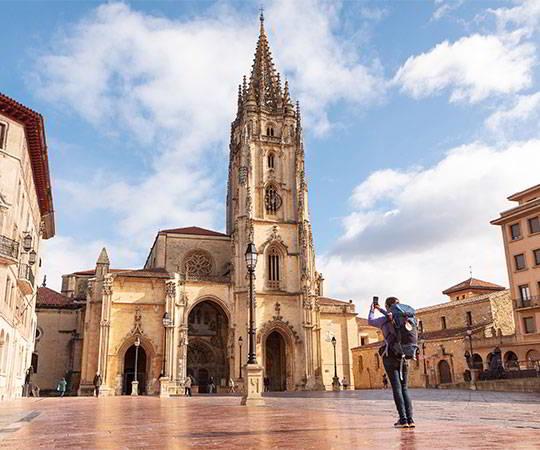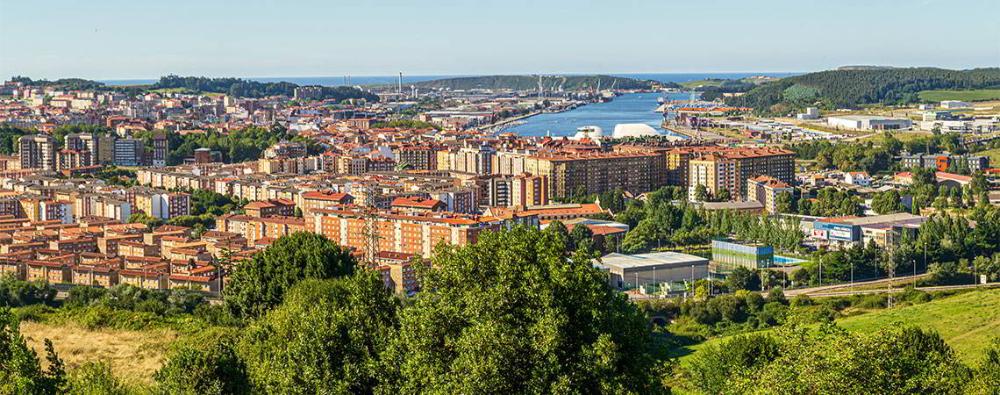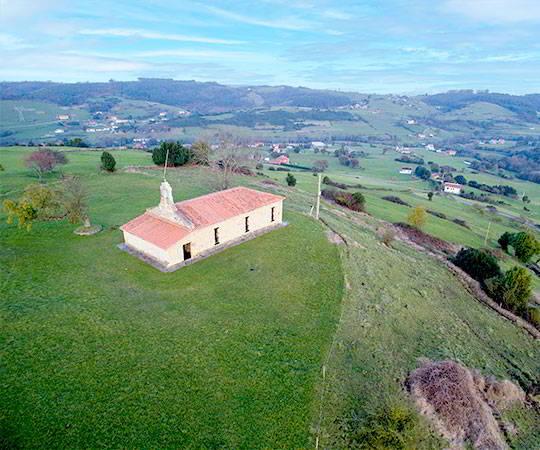The Camino de Santiago has always been much more than a pilgrimage journey. It was a meeting point, a place to connect with people, share experiences and open up to spirituality. It marked the Middle Ages, giving Europe an identity of its own, and paved the way for the Renaissance and its new ideas.
Precisely in the management of this context, Asturias is a pioneer, and is the cradle of that spirit of connectivity and freedom that the Way of St. James signifies.
/documents/39908/67668/catedral-salvador.jpg/c92ebe38-4e11-94c5-f358-ca3ab6bb4491?t=1729590010889

Cathedral of El Salvador (Oviedo/Uviéu).
Thus, it was not surprising that many pilgrims, after visiting the Saviour in the Cathedral of Oviedo/Uviéu, headed north towards the main Asturian seaport in the Middle Ages, which was the town of Avilés.
/documents/39908/67668/ria-aviles.jpg/b0a36721-9a20-0df6-a8ce-a7b6758d4986?t=1729593513967

Ría de Avilés.
Route of the connection of the Primitive Way and the Coastal Way
At that time, there was an intense and fluid relationship between those two cities, Oviedo/Uviéu and Avilés, and this fact contributed decisively to the creation of a pilgrimage route that has survived until the 21st century, and which runs through the councils of Oviedo, Llanera, Corvera de Asturias and Avilés, along a route of almost 30 kilometres.
The very departure from Oviedo/Uviéu towards Llanera already gives a glimpse of a Jacobean stage that will immerse you in the atmosphere and the best-kept rural secrets of the centre of Asturias.
/documents/39908/67668/puente-cayes.jpg/5ce57de9-1741-f6f8-a622-3a4d85d765f5?t=1729598478260

Cayés Bridge (Llanera).
Under the influence of the relics of the Holy Chamber of the Cathedral of Oviedo/Uviéu, the Way gradually enters, with the murmur of the river Nora as a backdrop, the council of Llanera, passing through its capital, Posada.
/documents/39908/67668/ermita-justo-pastor.jpg/8375047e-6f01-9ab6-1c9c-ac44fe0c76c9?t=1729599674909

Chapel of Saints Justo and Pastor (Solís - Corvera de Asturias).
It was precisely in this council that the Roman Empire established the link between its routes in Asturias, the Lucus Asturum. And centuries later, from the Middle Ages onwards, noble places were created, of which today we have historical and architectural testimony in the form of mansions and palaces such as San Cucao or Campomanes in Cayés.
Alongside the palatial grandeur, and in harmonious combination, the genuine atmosphere of the Asturian villages, with their hórreos and paneras, and with their green meadows, watered by streams and small rivers?
And so, step by step, after climbing the Alto de la Miranda, and walking through the council of Corvera de Asturias, the route enters Avilés through Los Campos. Once in the Villa del Adelantado, a stroll through its impressive historic quarter, where every corner hides a treasure and dozens of anecdotes, is a must.
Itinerary and stages of the connection between the Primitive Way and the Coastal Way
Discover the complete itinerary and detailed stages to connect the Primitive Way and the Coastal Way in Asturias. Plan your Jacobean adventure!
Find hostels in the connection of the Primitive Way and the Coastal Way
Find the perfect hostel for your trip - rest and recharge your batteries after the stage!


